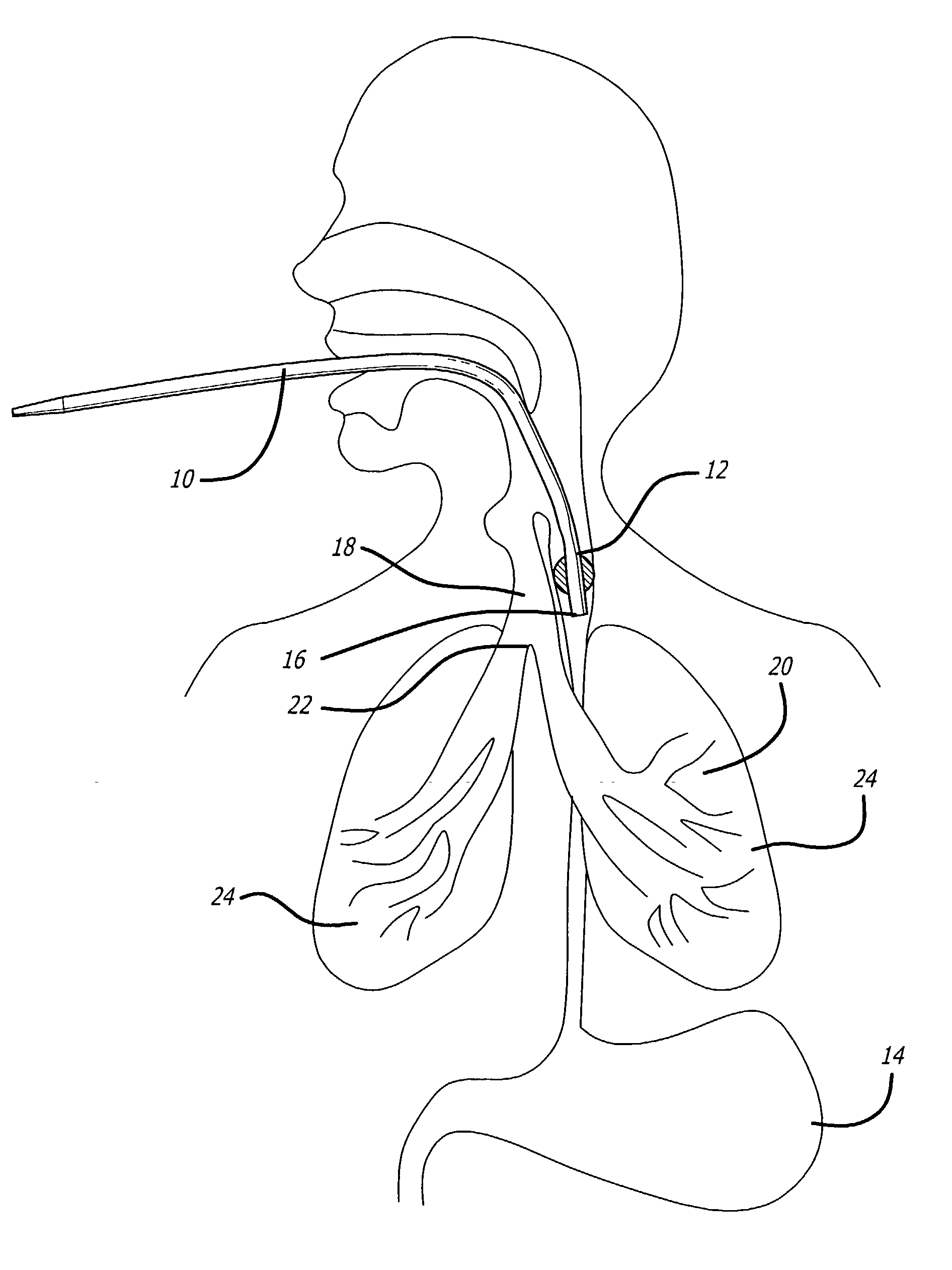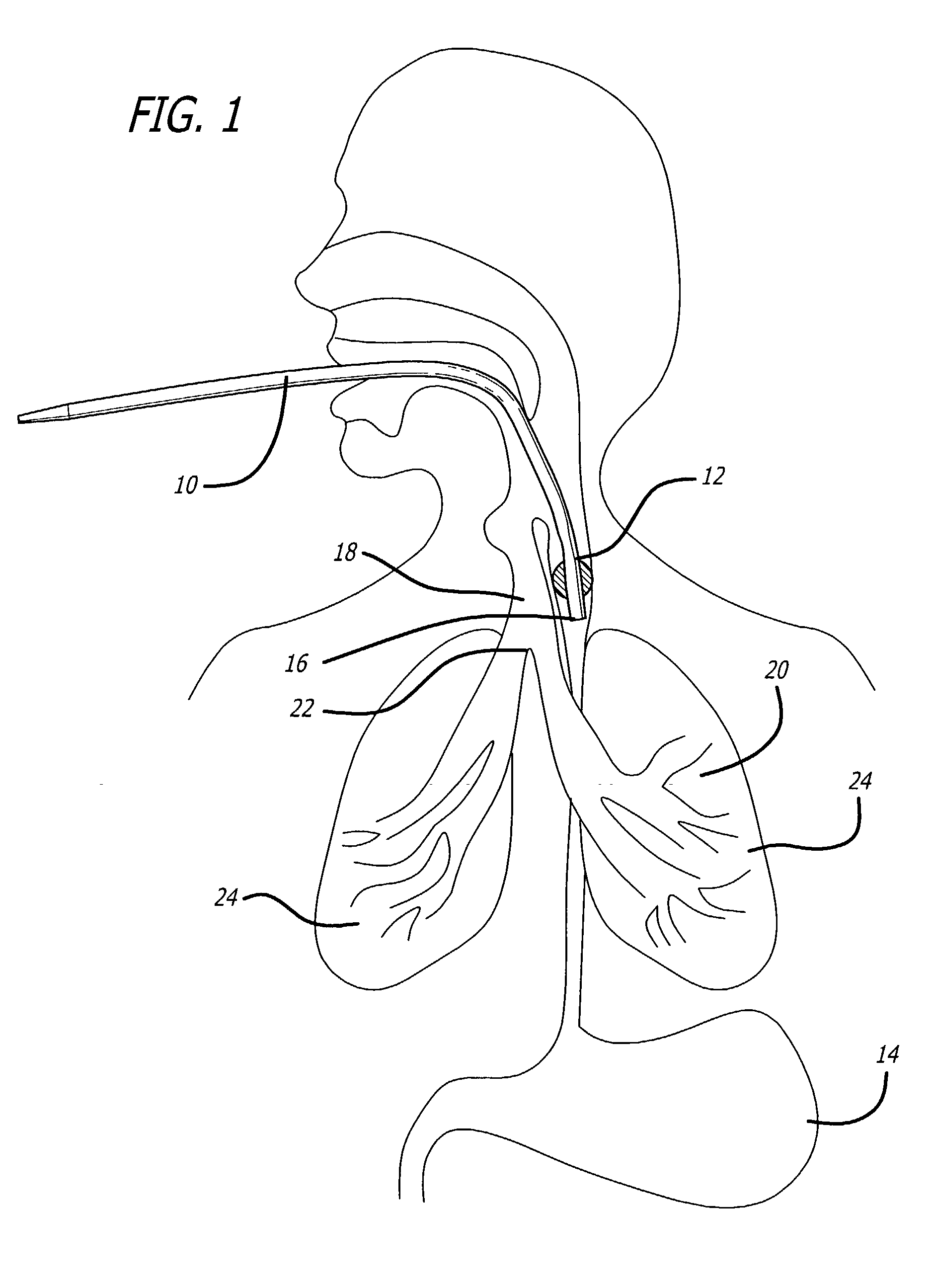Determining endotracheal tube placement using acoustic reflectometry
a technology of tracheal tube placement and acoustic reflectometry, which is applied in the field of intubation, can solve the problems of inability to direct visualization, inability to detect expired carbon dioxide, and inability to have fiberoptic bronchoscopy
- Summary
- Abstract
- Description
- Claims
- Application Information
AI Technical Summary
Problems solved by technology
Method used
Image
Examples
Embodiment Construction
[0048] FIGS. 1-3 are side elevational views showing an endotracheal tube ("ETT") 10 inserted into different anatomical sites in a patient.
[0049] FIG. 1 is a side elevational view showing the ETT improperly inserted into the patient's esophagus 12 which, of course, leads to the patient's stomach 14. The distal end 16 of the ETT 10is shown in the esophagus 12 just below the entranceways to the esophagus 12 and trachea 18.
[0050] FIG. 2 is a side elevational view showing the ETT improperly inserted into a patient's bronchus 20. An endobronchial intubation such as this occurs when the distal end 16 of an ETT 10 is advanced through a patient's trachea 18, and advanced further beyond the carina 22, into the left (as shown) or right (not shown) mainstem bronchus 20. In such a situation, ventilation of only one of a patient's lungs 24 is possible.
[0051] FIG.3 is a side elevational view showing an ETT 10 properly inserted into a patient's trachea 18. The distal end 16 of the ETT 10 is positio...
PUM
 Login to View More
Login to View More Abstract
Description
Claims
Application Information
 Login to View More
Login to View More - R&D
- Intellectual Property
- Life Sciences
- Materials
- Tech Scout
- Unparalleled Data Quality
- Higher Quality Content
- 60% Fewer Hallucinations
Browse by: Latest US Patents, China's latest patents, Technical Efficacy Thesaurus, Application Domain, Technology Topic, Popular Technical Reports.
© 2025 PatSnap. All rights reserved.Legal|Privacy policy|Modern Slavery Act Transparency Statement|Sitemap|About US| Contact US: help@patsnap.com



